Intihuatana: stone that captures the sun
Beliefs and ancient Inca mythology
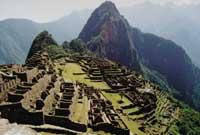
According to Andean thought, the universe was formed by heaven, earth and caves. These three zones differed, but there were connections between them. All three formed cosmo. According to the people of Runa and several villages that lived in the jungle, this universe had a vertical structure, divided into the three above-mentioned planes: the firmament or the sky ( anapacha), the earth (caypacha) and the subsoil ( ucupacha) (the names in italics are given in the Inca language, in Quechua).
In the world or heaven above lived the astral and heavenly gods: Sun, Moon, stars, constellations (Pleiades, Crux, etc. ), lightning, thunder and other meteorological phenomena. They believed that the shape of the ortzi was like a tumi (Andean knife) (Figure 1). The ends of the tomb joined the earth and set the limits of the world. Therefore the sky was touched by the poetic name of tumibamba (or tumipampa), a concave plain like the mouth of a tumi. The passage of the Sun through the center of the sky and its exit to Earth caused a great heat that in some cases caused droughts and caused the death of the people. That is what, according to them, happened when the orchards that lived in the northern mountains disappeared.
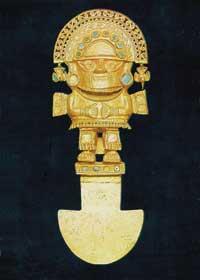
They believed that the Earth was flat: the circular disk that had as limits the ends of the sky. The disc was surrounded by water. There lived human beings, animals and plants, as well as various spirits.
The first human beings, animals and specimens emerged in the subsoil. All of them reached the caypacha taking advantage of the holes called pacarina (springs, lakes, lagoons, caves, etc. ). At night the Sun was immersed in the water and by a long tunnel it moved under the ground to reproduce the next day.
The only man who could make the connection between the three worlds mentioned was the so-called sornca. However, before the Inca era, the lords of the ethnicity and kingdoms (jatuncuraca) did this work.
The sky
The Andean population was mainly peasant and has long watched the stars. It should be noted that they were limited to observing stars of possible practical application. Thus, as all the stars mentioned lived in heaven, they acted very much in the face of heaven. Thus, there were priests of the Sun (tarpuntae) and their temples were the best astronomical observatories.
Eclipses
They gave great importance to the eclipses of Moon and Sun. Incas considered that eclipses were in some cases the result of sexual intercourse between two stars and in other cases indicated that the stars were angry or dying for some beast. The people could not at all accept this situation and with the intention of saving and resurrecting the stars, after hearing the Aztis, they used to make some sacrifices. In these sacrifices they offered figures of gold and silver and cattle. It should be noted that these sacrifices also killed young children.

For Run, the eclipse of the Sun also announced the death of a great leader, even of the same sadorca, in which the Sun showed itself struggling to express its discontent. Aclla (priests) lost, wore mourning suits and offered sacrifices over and over again. Sedertca went to a hidden place to be alone. There he lost for several days and celebrated rites. During that time no one lit fire in Cuzco.
According to the meaning others gave to the eclipses of the Sun, the origin of these phenomena was at the beginning of the Sun, because of some sin that had been celebrated against him. According to this, the eclipse was only the dark face of the Sun, which announced a terrible punishment.
However, the lunar eclipse had its origin in some Moon disease or in the aggression of pumas or suggestive. The fear of staying dark was enormous, for if this happened, the Moon would die and fall from the sky, destroy the world. Moon eclipses thus produced panic. Therefore, as soon as the eclipse began, they tried to make a great revolt. To do this they played trumpets (pututos: sea snail branches), drums of different sizes and other instruments. They tied and beat the dogs to bark the Moon. In his opinion, the Moon enjoyed great esteem for dogs, because of a service that allowed the Moon to perform these animals.
Children and young people were also charged with crying and shouting “mamaquilla !” (The Mother Moon) so that humanity and the planet would not disappear. All this made the noise generated unsustainable. The severity of Moon disease was calculated based on the duration of the eclipse. As mentioned above, when it was total, the population was desperate, considering that the Moon was on top and that it would die with the Earth. In the case of total eclipses, therefore, the tires and grays that were produced were huge.
Rainbow
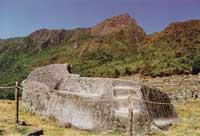
The Rainbow had only three colors: green, pink and lilac ( papatica: potato flower); not having the proper tools, they could not appreciate more nuances. The rainbow was considered a two-headed snake and the heads were shaped like a wild cat. The snake was very dangerous for children and young women, as women could leave them pregnant and children born would have deformations. In his opinion, the rainbow ({ chi or turumaya) began in a spring, ascended to heaven, then descended to Earth and finally entered another spring.
Constellations
The Incas already knew the Milky Way and called it Mayu (The River), as they considered it an ibán in the dark sky of the night. They distinguished between bright constellations and black constellations. The brilliants are stars similar to those observed from western Europe and close to each other. Most are located near the Milky Way: Pleiades ( Colca: warehouse), Crux ( Chacana), Scorpius ( Amaro), Alter ( Pachapacaric), Orio ( Orcorara), etc.
The black constellations were located in the Milky Way itself, in dark areas, among luminous stars, which acquire a special shape. Some of them are: Llama (black stripe between the constellations of Crux and Scorpions), Yuto (coal sack next to Crux), Ampatu (Sapo, black stain next to the Cross), Atoc (black stain between the tail of Azeria, Scorpions and Sagarius), Machacuay (Black vorilla between Cross and Guitar). (Figure 2)
Incas believes that the stars influenced human life and were always indicators of something. According to its phase, the Moon announced rain or drought. The Full Moon was suitable for the planting and harvesting of the harvest, as well as for the work done with wood (not to keep the pipes). In times of war the Moon also influenced. When it was Full Moon they faced the struggle with great force, which was the most favorable time for war. On the New Moon, the fighters retreated ten or twenty kilometers to rest and make some sacrifices.
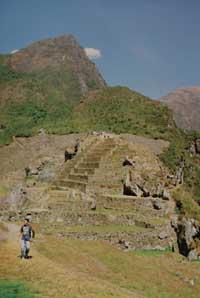
When the comets appeared to them, they saw them as signs of war, catastrophes, plagues and death of important characters. The appearance of the seven goats (the Pleiades) represented the beginning of the agricultural year. Thus, the stars were observed especially by farmers and ranchers. However, politicians did not give much importance to this work, since they had other means to make forecasts.
Capture forms: calendar
From among the stars, of course, the Sun was the most powerful and the most adored, as he commanded how time passed. They distinguished the solar year from lunar months. Not all ethnic groups in the territory started the year on the same day, which started in December (winter solstice), but the peasants, especially those in the Collao area, in August or September, at the time of planting. The year ended, therefore, in June or July, once harvests were collected. Around the chinchaysu, however, the year began in June with the appearance of the Pleiades and ended in May during the harvest of corn.
Although the beginning and end of the year fit any day, they were all distributed in twelve months. According to the story, the names of the months of Cuzcon were those of Maita Capac and each month there were different spiritual acts, as well as the celebration of special festivals (figure 3).
Moon times regulated the celebrations of some rites. January celebrations were held on Full Moon and New Moon; in September, the beginning of the so-called "situa" coincided with the new moon.
Each month had a fixed time of 30 days. They also distributed the month in “weeks” of ten days and booked a day per week to rest or to do catu (exchange fair). As for the day, they distinguished different parts, such as early morning, noon, dusk, etc.
The observation of the Sun was the main task of astronomers and priests ( tarpuntae) and along with the solstices were held two main festivals in honor of the Sun: capacraimi in December and intirraimi in June. The first was the most important, since it corresponded to a time that began to extend the day. At this time the rites of male access were also initiated ( huarachicuy). After these rites, the boys had obligations of older men.
The function of the calendar was to define the parts of the annual cycle. It also established relationships between human actions and the forces of nature. The calendar, therefore, was the essence of organization and coordinated relationships between gods, space, time and human actions.
It should be noted that, in the case of the Cuzco calendar, the solar year did not coincide with the twelve lunar months. There were always more days left than in the lunar year. To solve this, the remaining days were distributed over the months, but it is not clear how these calculations were done.
Simple time calculation systems

As already mentioned, to measure it in years and months it was based on the path of the Sun, the stages of the Moon and the appearance of the Pleiades, but the peasants used a more common way of measuring time, observing when some flowers and wild fruits of the area germinated. They also observed when small animals such as toads appeared. For example, the years were counted according to the number of flowering trees and harvests collected.
Consequently, when parents indicated that the Moon died three times from the birth of their son or daughter, they meant that it was three months old; when they said that a plant of these characteristics flourished twice, they meant that the child was two years old.
But, apparently, after four or five years of this form of counting, they began to mix in calculations and finally forgot the age of their sons and daughters. Time therefore passed without realizing it. The inhabitants, including the priestly elites, were aging no matter how long passed from birth to death. As for the computation of the years, the Incas and the inhabitants of the Amazon forests were quite similar.
However, according to a document of 1571, therefore at the time of the last ornaments, some quipucayos counted the flowering of the plants and observed the passage of the Sun; then on some strings they kept that data and in this way they could know the ages of the kings. This document has preserved the words of a neighbor of Cuzco, who said that Pachacutec reached the age of 100, that Tupac Yupanqui lived about 60 years and that Huayna Capac died at the age of 70. The document itself tells us that the Incas only cared about the age of decoration: the rest of the population did not care.
As for the “hours” of the day, the peasants distinguished through shouts or songs of animals, especially birds, that they did daily at the same time. In some areas, the hours were measured by the afternoon wind. In addition, they observed the shade produced by the mountains to differentiate the hours of the day. Let us finally say that these methods are still in force today.
Intihuatán: Stone that captures the sun
As mentioned above, the calendar was marked by the observations of the Sun and the Moon. Special tools were used to set the specific dates of the year. They wanted to know precisely the timing of the winter equinox, since from that day the Sun began to lean, which, according to them, indicated the tendency to abandon people. The priests then performed special rites to “catch” the Sun. These rites, prayers and sacrifices were celebrated in stone monuments.
A set of memories of this type is located in the hidden Andean mountain Machu Picchu at 4,300 m of altitude and near Cuzco, capital of the Inca empire. In it are preserved archaeological remains of an Inca town such as houses, terraces of tillage and temples of prayer. This area, given the difficulty of its access, has remained for centuries outside the influence of researchers. In fact, in 1912 it was the American archaeologist Hiram Bingham who discovered in the middle of the jungle this spectacular Inca legacy. Herriska is located on top of another secluded mountain, surrounded by height. Among the mountains is the valley of the Urubamba River, which has acted as a lubose refuge
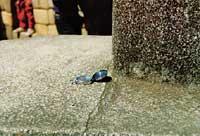
Most of the buildings are white granite and the dimensions of the stones used are huge, with altas-fifteen tons. The stones are also carefully carved and in a special orientation. These are the words of Hiram Bingham: “The main temple is facing south, towards a small square. To the east of the square is another surprising structure: the temple ruins of three large windows facing the canyon facing the east. This building is exceptional, since among the ruins that are known does not exist, neither in terms of design, nor in terms of its construction. As indicated, it is equipped with three large windows that are too large for any use.
At the same time, it seems that they are made very carefully, they are beautiful and firm. It is undoubtedly a building with a special meaning. As far as I know, no other three-window quarry wall has been found in Peru. It should not be forgotten that Salcamayhua, a researcher who wrote in 1620 about antiquity in Peru, pointed out that the first Inca, Manco Capac, had ordered the construction in his place of birth and should be a three-window quarry wall. Is that what I have found?”
Thus was described the discovery of this wonderful temple, the Temple of the Three Windows. Today it is believed to be the place where the first Inca was born. Inside this temple of worship there is a rectangular stone. The location of the windows allowed the gods to make every sacrifice in a suitable month, day and time to hear their requests. For this they had only to observe the path of the rays of light through the window and wait for that route to be parallel to the longer side of the stone for sacrifices.
In addition to this temple, there are other large rectangular stones of Machu Picchun. It is believed that their objective was to make sacrifices at different times of the year. The orientation of all these stones was fundamental to the correct ceremony (Figure 6).
It is clear that the Incas knew how to orient themselves on the basis of the Sun. Looking to the east, what they had to the right was called allauca (south) and to the iconic left (north). They gave more importance to the south than to the north, because it corresponded to the most used hand. What remained in the center was called tapi or chauin. For guidance purposes, however, high precision stone tools (intihuatanas) such as those found in the Machu Picchun were also used.
Intihuatanas are small stone tips placed on fairly smooth stones. In Quechua, the pronunciation of this word was intiguata (singular) and intiguatuna (plural). Inti is the Sun and the Huata year, the correct translation would be the solar year? The mission of these apparatuses was to catch the Sun with its shadow. They were perfect sundials that served to determine even the months of the year and the hours of the day. It must be said that the word intihuatana also appears in some colonial documents (7., Figures 8 and 9).
One of these intihuatanas, located in the Temple of the Sun, is formed by two rectangular pillars, one on the other, carved in a single granite stone. As we have said, their shadows were used as sundials. The four ends of the basic pillar are directed towards the cardinal points. What then is the function of the other pillar? The orientation of the faces of this other pillar narrower than the main pillar of the base is not the same as that of the base. A little is turned and, as can be seen through the compass (see figure above), the edge of the pillar is exactly oriented to the magnetic north pole. We can say that the Incas know the difference between the geographic north pole and the magnetic one.
On the eastern slope of the town of Machu Picchu is one of the most prestigious Peruvian intihuatanas. Observing the structure of this intihuatana, it is observed that the inclination of the edges of the main pillar is of 12 °, value that coincides with the latitude corresponding to Machu Picchu. Therefore, taking as a starting point the shadows projected in perpendicular plane, different positions of inclination of the Sun can be measured and, therefore, solar time.





